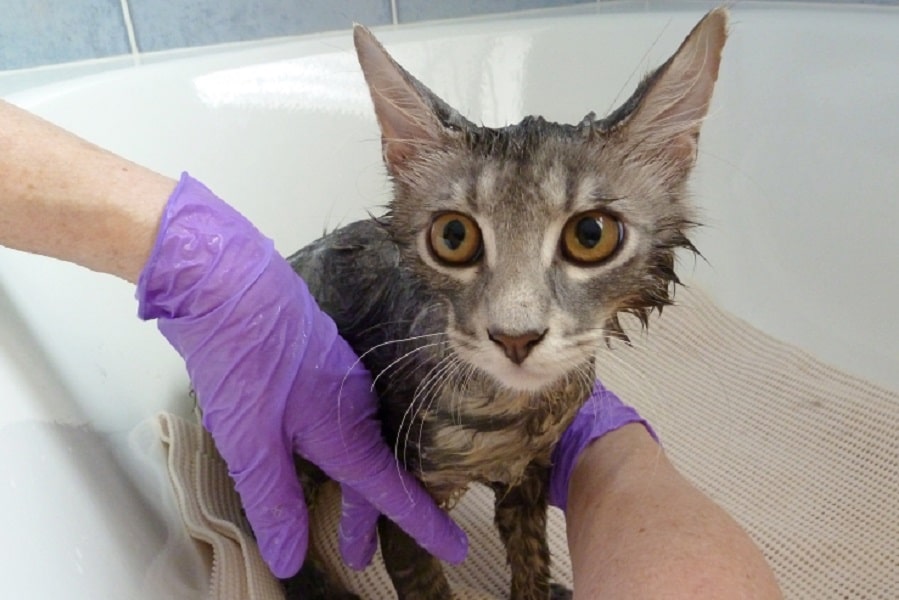
Bathing cats can be extremely stressful, causing them to become defensive or even violent, hissing, lifting their fur, and even lashing out at you. However, with a little planning and care, you can bathe your cat and avoid scratching.
Cats don’t require baths very often, but when they do, it’s not something they or you want to do. Here’s how to bathe a cat without scratching yourself.
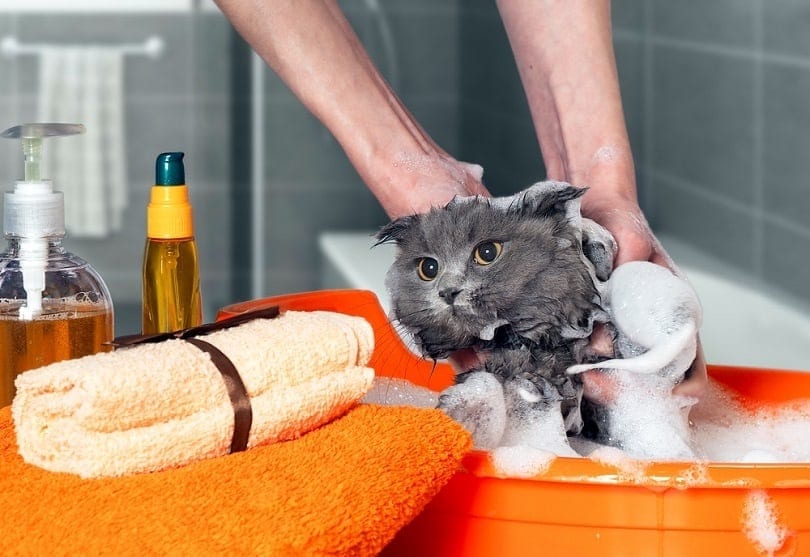
The ideal way to wash a cat is to make it as short and painless as possible. Before you begin, make sure you have all of the necessary supplies on hand:
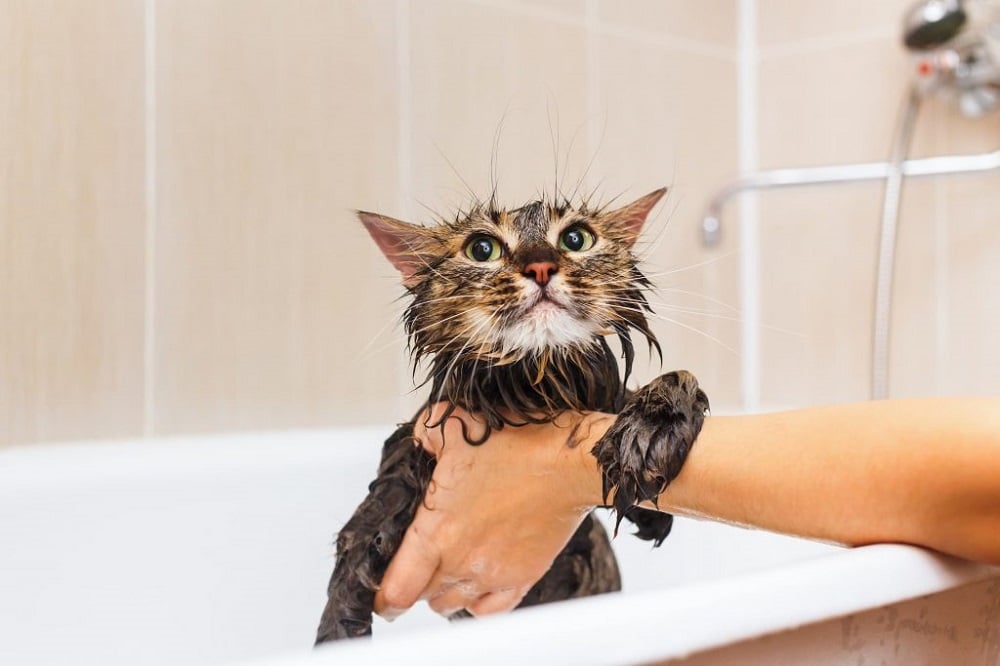
Washing your cat at a kitchen or bathroom sink is considerably easier than stooping over a bathtub. The following is a step-by-step tutorial on how to bathe a cat.
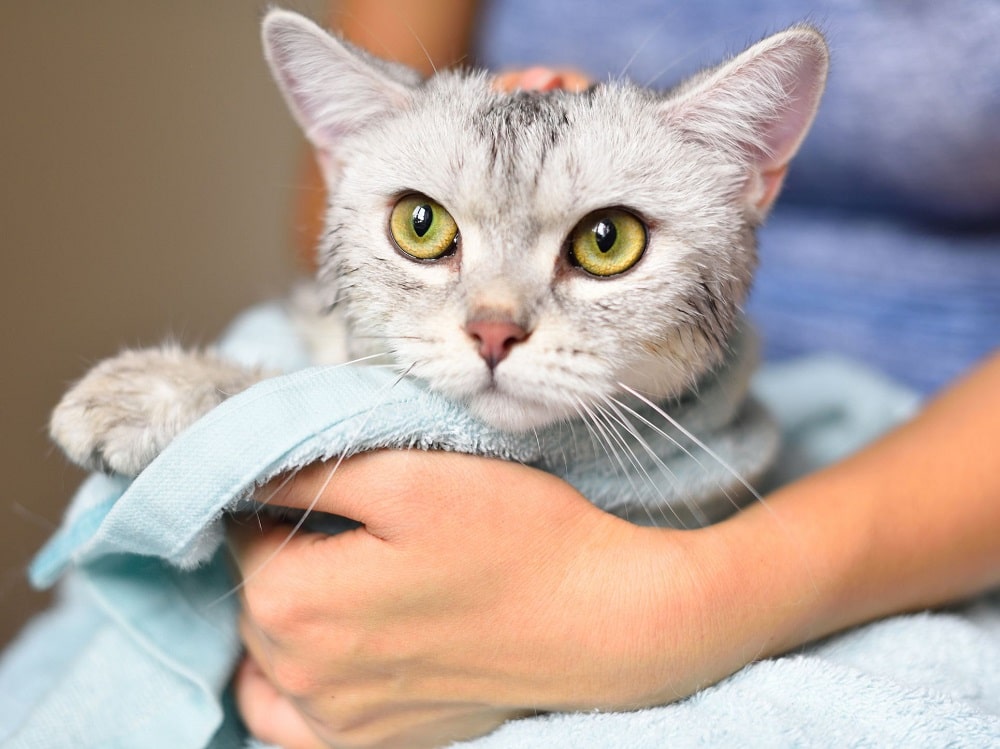
Now that your cat has had its bath, you’ll need to dry them off with a towel so they don’t become uncomfortable or cold. Cats and hair dryers are often not a good match. You can use a hairdryer if you have a longhaired breed that requires some help drying off.
The sound of a hairdryer will scare a lot of cats. If this is the case, immediately switch it off and stick to the towel. You should also use a low-heat setting or a pet-specific drier to keep things cool. You’ve probably made it thus far without harming each other, and you don’t want to risk burning your cat at this point.
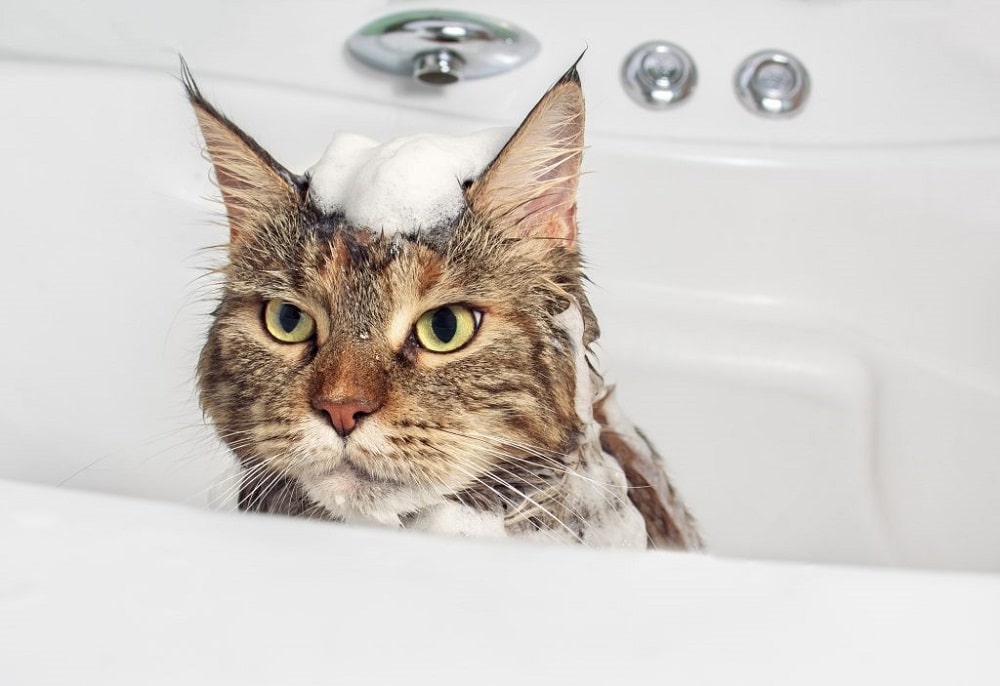
If you have a cat at home that hates water then help your kitty used to water. Some cats require some time to understand that the bathwater isn’t going to harm them. Allow him to gradually become accustomed to the concept of a bath by wetting his paws at first. Alternatively, keep him in the bathroom with you while you take a bath to adapt him to the sound of running water.
When his paws get a little wet, give him some snacks. You may even submerge one of his toys in the water. This might pique his interest enough for him to take a paw into it, allowing him to see that it’s not so terrifying after all.
Some cats will become more accustomed to water with time, while others will still want that extra nudge and comfort during bathing.
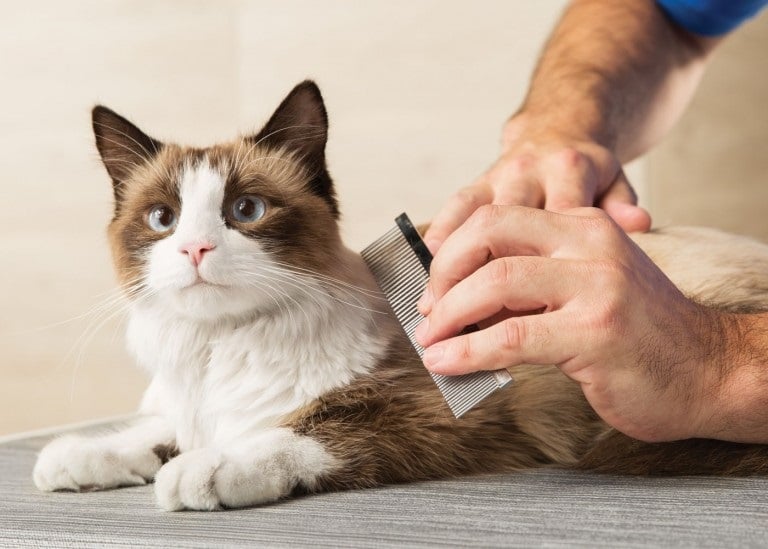
The second dilemma that arises when considering how to bathe a cat is whether or not cats require bathing in the first place. In most circumstances, a cat does not require water to be washed. Regular brushing is typically enough to keep your cat looking clean and comfortable because cats groom themselves naturally.
However, there are times when understanding how to bathe a cat is required. It’s possible that they peed in the litter box. Cats have been known to attempt to climb up a chimney’s interior. Perhaps you’ve recently adopted a new cat and are welcoming her into your home for the first time. If you’re using flea or fungicidal treatments, you may need to know how to bathe a cat.
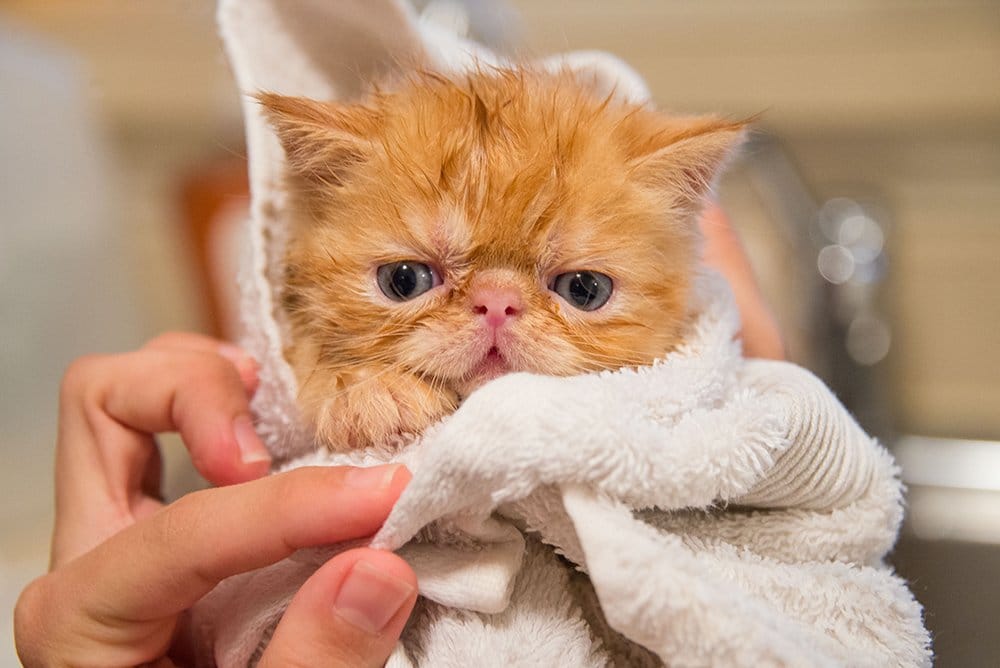
Some cats don’t like rapid movements, and they’ll appreciate it if you take it extra slow when they’re in the bathtub. Gently wash your cat and speak to him in a calm tone.
Don’t shower your cat with a hose. Instead, carefully scoop the water onto your kitty with your hand-dipped in warm water. Scoop a little at a time until his fur is completely saturated. Make sure no water or soap gets into your cat’s eyes, ears, or nose.
You want a good lather with flea shampoo. Continue to rub the lather in for three to five minutes over the entire cat, avoiding the area around the eyes. The massage will make your cat very happy!. Make sure you follow the instructions properly and don’t keep the shampoo on for longer than necessary.
You can take your cat out of the bathtub and replenish the lukewarm water within those few minutes if the bathroom doors are closed and there’s nowhere for him to hide. If you’re using small tubs, add some warm water to the clean water to keep it at a comfortable temperature. Keep an eye on him to make sure he doesn’t lick himself. Then rinse everything well, being careful not to leave any soap behind.
Blot his damp fur with a dry towel after the bath to remove some of the excess water. Then bring him out into a small, warm room to air dry.
If after reading all of this, you still feel uneasy about bathing your cat, you may always hire a professional groomer. Some groomers will even come to your house to wash your cat. We hope this information is helpful!